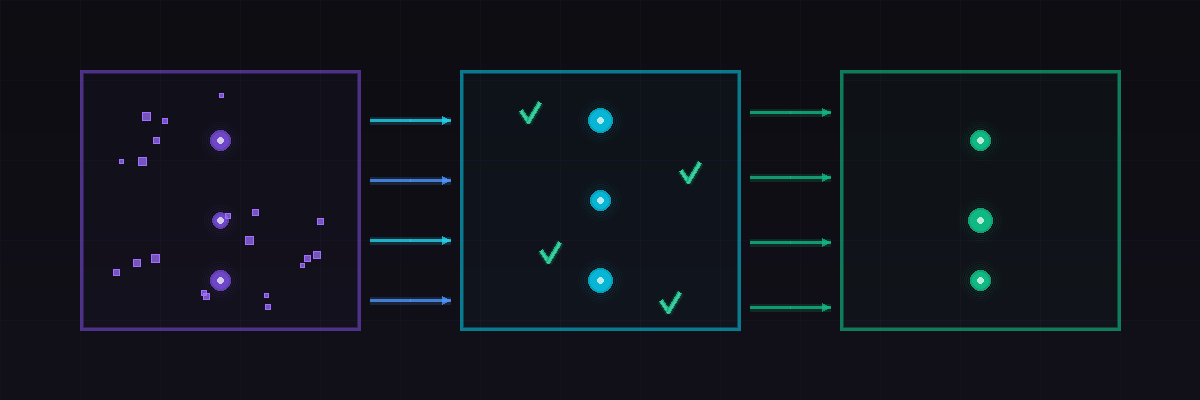In modern software systems, logs are more than just text files filled with debugging statements. They are critical sources of truth about how applications behave in real-world environments. Yet, too often, logs are written in an unstructured, free-form manner that makes them difficult to query, analyze, or integrate with observability tools. This is where structured logging comes in as a method of producing logs in a consistent, machine readable format that unlocks powerful benefits for developers, operators, and businesses alike.
What is Structured Logging?
Structured logging is the practice of capturing logs in a predictable, standardised format (usually JSON. Grepr automatically parses JSON) rather than as plain text. Each log entry consists of key-value pairs that describe the event, making it easy for both humans and machines to parse.
For example, an unstructured log might look like this:
172.17.0.1 - - [20/Aug/2025:12:26:24 +0000] "GET / HTTP/1.1" 200 142
"-" "Mozilla/5.0 (Macintosh; Intel Mac OS X 10_15_7)
AppleWebKit/605.1.15 (KHTML, like Gecko) Version/18.6 Safari/605.1.15"
"-"While this line is readable, it’s difficult to extract individual fields without writing fragile text parsing rules.
A structured log of the same event might look like this:
{
"source": "nginx",
"time": 1755693131.987,
"resp_body_size": 2605,
"address": "172.18.0.1",
"request_length": 384,
"method": "GET",
"uri": "/",
"http_status": 200,
"user_agent": "Mozilla/5.0 (Macintosh; Intel Mac OS X 10_15_7)
AppleWebKit/605.1.15 (KHTML, like Gecko) Version/18.6
Safari/605.1.15",
"resp_time": 0.000,
"upstream_addr": ""
}Here, every piece of information is clearly labeled, machine readable, and queryable. Instead of searching through free text, you can directly filter for "http_status":200 or aggregate requests by "method".
Why Do You Need Structured Logging?
Improved Observability
Modern systems generate massive amounts of log data across distributed services. Structured logging ensures this data can be ingested and interpreted by log aggregation tools like Grepr, Datadog, Splunk or New Relic without complex parsing. This allows you to slice, dice, and visualise log data with precision. For example, instead of scanning gigabytes of text logs, you can instantly query: “Show me all requests that do not have a http_status of 200.”
Consistency Across Teams
In large organisations, different teams often adopt different logging styles, leading to chaos when these logs are aggregated. By enforcing structured logging, organisations establish consistent standards, ensuring every service logs using the same format and key fields. This consistency makes cross team collaboration smoother and reduces effort for engineers.
Future Proofing Your Logs
As your system evolves, so will your logging needs. Structured logs make it easier to add new fields without breaking existing queries or pipelines. For example, adding "latency_ms": 120 to a structured log introduces new insights without affecting tools already consuming the existing fields.
Faster Troubleshooting
When incidents or issues occur, time is critical. Structured logs make it easier to correlate events across systems. If every log includes consistent fields, such as request_id or transaction_id, you can trace the journey of a request across multiple services without guesswork. This dramatically reduces the time and effort required by engineers investigating the issue.
Automation and Integration
Structured logs can feed directly into automated workflows. For example, if a log entry includes "severity":"CRITICAL", monitoring tools can trigger alerts, open incident tickets or even initiate automated recovery actions and/or trigger a Grepr backfill job. Without structure, such automation would require brittle text matching rules, which are error-prone and harder to maintain.
Better Metrics and Analytics
Logs are not just about troubleshooting; they also provide insights into usage patterns, performance and business trends. With structured logs, you can transform raw log data into metrics: number of logins per minute, average payment amount, error rates per endpoint, or geographic distribution of users. Structured data can be directly aggregated into dashboards, turning logs into a valuable source of analytics. Grepr exceptions are automatically created for matching log entries that are used in metric generation.
How to Get Started with Structured Logging
Adopting structured logging requires both cultural and technical shifts:
- Choose a Format: JSON is the most common and fully supported by Grepr, widely supported across programming languages and logging platforms.
- Use Logging Libraries: Most modern languages have libraries or frameworks that support structured logging out of the box, such as Zerolog (Go), Pino (NodeJS), many other languages and frameworks natively support structured logging.
- Define Standards: Decide on a set of common fields (e.g. timestamp, level, service, request_id) that every team should include in their logs.
- Centralise Logs: Use a log aggregation system (Datadog, Splunk, New Relic) to collect, store and query logs in one place. Structured logs are most powerful when combined with centralised observability platforms.
Grepr works great with structured logs but can also work with unstructured logs. It has the ability to intelligently parse free text logs, automatically picking out common fields such as: timestamps, severity and message body; see the previous post on the Grepr Data Engine to read more about how it works.
Conclusion
In an era of distributed systems, microservices and cloud native applications, unstructured logs simply do not facilitate easy integration. Structured logging provides clarity and consistency, turning logs from mere troubleshooting artifacts into rich, queryable datasets that enhance observability, decision making and reducing incident resolution times.
By adopting structured logging, you not only make life easier for developers and operators but also unlock new opportunities for automation and analytics. In short, structured logging isn’t just a “nice to have”, it’s an essential practice for modern software systems.
More blog posts
All blog posts
Why First Mile Log Processing Reduces Costs Before Ingestion
.png)
Remove Sensitive Data From Your Logs With the SQL Transform



